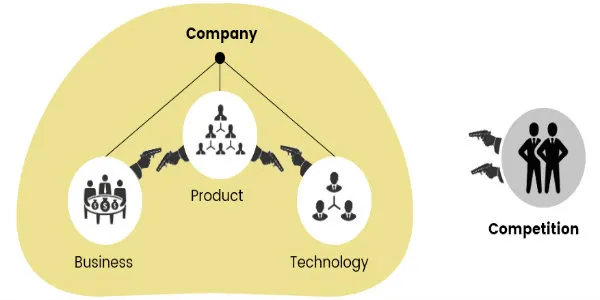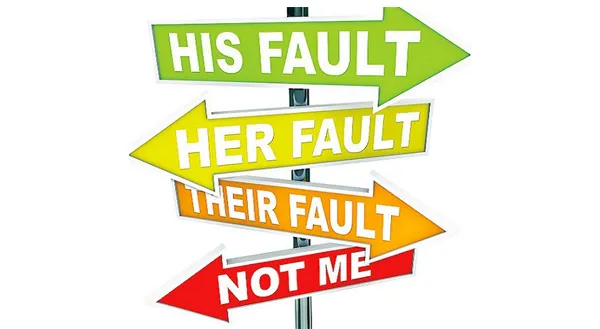Why cross-functional teams fail, and how solver-teams sail
A "cross-functional project" is synonymous with a "nightmare project" in any corporate organisation. One has to remain on guard from so-called cross-functional team members, and be very cautious and politically bolted in communications. The term 'team' is a misnomer there.
A team is not a group of people who work together. A team is a group of people who trust each other. - Simon Sinek
Cross-functional teams are the fundamental weak link for all development methods (lean, agile, kanban, waterfall etc). Their inefficiency deprives these methods from realising their full execution benefits and the credibility of the development method itself goes down.

Typical Cross-functional teams - "Complete your assigned tasks"
These teams are present in all projects involving different departments. Representatives from different departments work together. They play a defined part in a larger project, and do not need to worry about other counterparts’ tasks. The final outcome is not everyone's responsibility.
Characteristics of typical Cross-Functional Teams:
- Accountability: Teams are accountable for only doing their part and not towards the final outcome. Members can get away unscathed if they prove it was not their fault.
- Little trust. Documentation of evidence becomes a norm to pass the blame when needed. Members prefer Email > Chat > Phone > F2F as the mode of communication. Writing diplomatically correct and onus passing emails becomes a respected art.
- Negativity, friction: Politics and escalation across departments is rampant among team members. Members escalate frequently to their department bosses. Little effort is done to resolve issues among themselves.
- Victim mode: Members often show helplessness owing to external circumstances. External circumstances can be different people, team, department, company or event, and is the justification for their previous and oncoming failures.
- Changes for course correction meet heavy resistance even when it is the right thing to do. Members optimise for the ease and benefit of themselves and their departments. The larger interest of the whole organization takes a back seat.
- Disengaged and drained workforce. Political caution and keeping safeguards become the necessary survival skill. This takes a greater toll on the body than the actual work done.
- Slow paced and non-iterative development. The aggressive fast action never thrives in a non-trusting environment.

Solver Teams - "Sail and sink together"
Solver teams (concept link) is a self-sufficient set of people who are tasked to 'Solve' a defined problem. Together they are accountable for the outcome. Solver-teams is a mindset (not structural) evolution over typical cross-functional teams.
It is called 'Solver' team as the intent is to solve a problem, not just build features. Often, a problem can be solved just by using documents, spreadsheets or even pen-paper. The success metric is the same for all team members. This motivates members to help each other and avoid failing together.
Characteristics of Solver Teams -
- Focused alignment and accountability towards goal. The success of the project is a success for all members, and so is the failure. By analogy, if the boat sinks it doesn't matter which side the hole was on. Everyone should have proactively helped to avoid sinking, or suffered together.
- Trust and synergy among members. Members have to be ready to help each other to achieve a common goal, and have a deeper understanding of end-to-end flows.
- Proactive course correction. Members need to be ready to change plans, even when it needs rework, as long as it helps in achieving the goal. Any disinterest or incompetence must be highlighted to seniors so that corrective action can be taken well in time.
- Very high speed of execution. Members follow F2F > Phone > Chat > Email. Quick decisions are taken without bureaucracy and email chains.
- Members escalate together.Members involve their seniors to make decisions in case they cannot agree on something among themselves.
- Strong sense of ownership. Members are party to transparent decision-making across departments. This builds strong ownership of decisions taken.
- Passionate members. ‘Get-Shit-Done' attitude is rampant to make their decisions successful.
- Move Fast, Fail Fast, Iterate. It is only possible when there is a trusting and synergistic environment. That's why startups having 20 employees have the fierce agility. Later, the same company loses steam owing to internal friction and factions.
(Disclaimer: The views and opinions expressed in this article are those of the author and do not necessarily reflect the views of YourStory.)








